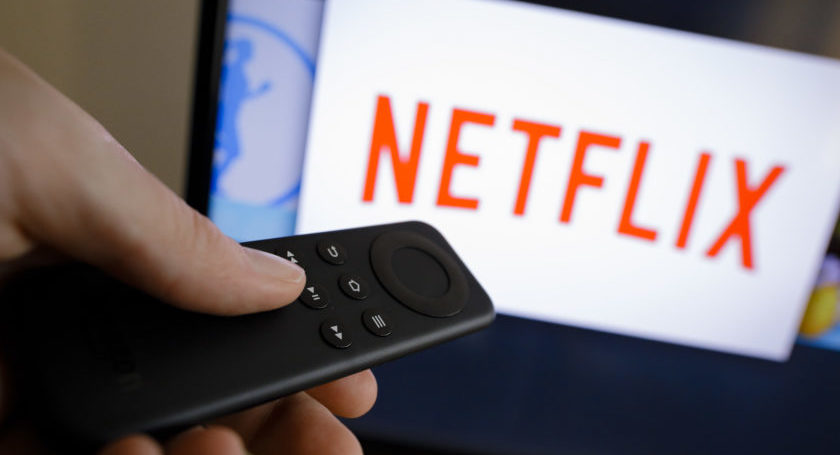M+E Connections

Netflix’s Hastings: No Major Impact From Increased Competition in Q1
Story Highlights
The increased number of rivals that Netflix is seeing enter the streaming video arena didn’t play a significant role in the company not achieving its subscriber growth expectations in the first quarter (ended March 31), according to Reed Hastings, its co-CEO and founder.
Netflix added 3.98 million subscribers in Q1, much lower than the 6.29 million it had projected and the 15.77 million that it added in Q1 last year.
In its latest quarterly letter to shareholders on April 20, Netflix noted that it finished Q1 with 208 million paid memberships, up 14% from a year ago but below its guidance forecast of 210 million paid memberships.
“We had those 10 years where we’re growing smooth as silk” and it is “just a little wobbly right now,” Hastings conceded during its latest quarterly Q&A webcast on April 20.
As a result, “of course, we’re wondering, ‘Well, wait a second, are we sure it’s not competition?’ Because obviously there’s a lot of new competition,” he pointed out.
Netflix executives, however, “really looked through all the data, looking at different regions where new competitors are launched [and] are not launched,” he explained. “And we just can’t see any difference in our relative growth in those regions, which is what gives us confidence that it’s intensely competitive but it always has been. I mean, we’ve been competing with Amazon Prime for 13 years, with Hulu for 14 years. It’s always been very competitive with linear TV, too. So there’s no real change that we can detect in the competitive environment. It’s always been high and remains high.”
What played a much bigger role in Netflix Q1 performance was the pandemic, according to Spencer Neumann, its CFO.
“It really boils down to COVID, frankly,” Neumann explained. “As you know, the extraordinary events of COVID have had a big impact on the world [and] continue to have a big impact on the world. And for us, at a minimum, [it] creates just some short-term kind of choppiness in some of the business trends that we see in our business. So, in particular, we had this huge pull forward in 2020 in terms of our subscriber additions, [with] nearly 40 million paid net adds in 2020.”
Netflix also had a “near global shutdown in production, which we’ve been ramping safely and at scale through much of last year and into this year but it did push some key title launches into kind of the back end of this year,” Neumann pointed out.
“The combination of those two things does create some noise,” he said, adding: “It’s super hard to obviously kind of forecast quarterly subscribers in a typical quarter for us and particularly hard in this environment.” Because it is just a forecast, “we’re going to miss every quarter – it’s just a matter of whether they’re bigger or smaller misses,” he noted. If you look over the past five years, its biggest forecast misses – up or down – have been in the “five quarters of COVID,” he said.
What is “key is the business remains healthy,” he pointed out, explaining: “Our engagement, our viewing per household was up year-over-year in Q1. Our churn was down year-over-year and the business is still growing. So even at 4 million paid net adds, if you kind of take COVID out and look over the past two years, we’ve grown from two years ago at about 150 million members to almost 210 million now. So that’s nearly 40 percent growth and about just under 20 percent over an average over each of those two years, which is in line with the past couple of years. So the business remains healthy, and that’s because the long-term drivers – this big transition from linear to streaming entertainment… remains as healthy as ever.”
Although MoffettNathanson analyst Michael Nathanson said in a resarch note on April 21 that “investors should be concerned about subscriber growth in the U.S. and Canada, he added there were several positives in Netflix Q1 results.
“On the bright side, the company – as promised – delivered strong operating margins and positive free cash flow as new content spending and amortization slowed,” Nathanson said. Also, “we are very excited that the company is now turning cash flow positive and enacting a share buyback program,” he added, noting “these actions should allow investors to begin to assess Netflix’s valuation using tools other than price-to-revenue multiples.”
Netflix continues to “anticipate a strong second half with the return of new seasons of some of our biggest hits and an exciting film lineup,” it said in the letter to shareholders. But it said: “In the short-term, there is some uncertainty from [COVID]-19; in the long-term, the rise of streaming to replace linear TV around the world is the clear trend in entertainment.”
The company reported that Q1 revenue grew to $7.2 billion from $5.8 billion a year ago, while profit grew to $1.7 billion from $709 million, with earnings per share increasing to $3.75 from $1.57.
In Q1, Netflix launched an opt-in Downloads for You feature for Android (with “iOS coming soon”) that “automatically downloads recommended shows and movies onto a member’s mobile device, ensuring that they always have something to watch irrespective of connectivity,” Netflix noted in the letter, adding: “Knowing that bandwidth and storage can be precious, this feature tries to choose only the most relevant content to download.”
Netflix also launched Fast Laughs, a mobile feed of short comedy clips from Netflix favorites in Q1 and it’s “initially available in several countries including the U.S. on iOS and will be on Android soon,” the company said.
For TV viewers, “this month we unveiled an updated and improved experience for Kids Profile that more vividly and easily connects children with their favorite titles and characters,” Netflix added.









